OSRAM Mercury vapour lamps
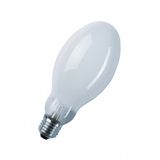

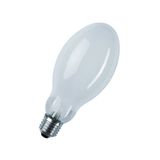

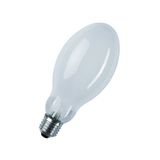
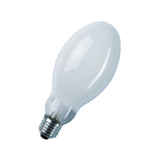

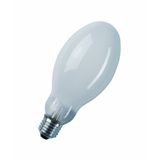


OSRAM Mercury-Vapour Lamps — industrial MV discharge lighting
OSRAM mercury-vapour (MV) lamps are classic high-intensity discharge sources for industrial yards, warehouses, and street lighting. They are valued for robustness and long lifetime in hard environments, but they have clear engineering caveats: slow warm-up, modest efficacy vs modern tech, poor color rendering unless phosphor-coated, and control-gear requirements. For procurement engineers, the question is less “can it light the area?” and more “does MV remain the right lifecycle choice compared to metal-halide or LED”.
OSRAM Mercury-Vapour Lamp Parameters and Standards
- Common wattages: 80 W, 125 W, 250 W, 400 W (E27/E40 caps).
- Efficacy: ~35–60 lm/W (phosphor-coated types at the higher end).
- CCT / CRI: ~3600–4200 K; CRI typically low (≈40–60). Phosphor coatings improve tint and CRI but not to MH/LED levels.
- Warm-up / re-strike: 4–7 min to full output; hot re-strike can take several minutes.
- Operating position: usually universal for coated outer-bulb types; check datasheet for any restrictions.
- Control gear: choke (EM ballast) sized to lamp wattage; no separate igniter (MV has an internal starting electrode or self-ballasted version).
- Standards context: HID lamp safety IEC 62035, control-gear IEC 61347, caps IEC 60061, luminaire IEC 60598.
- Regulatory note: MV lamps face tightening market availability in many regions due to efficiency rules; confirm local compliance and project allowances before bulk purchase.
Why it matters: the warm-up and re-strike profile affects outage recovery and sensor-based control; low CRI can hinder color-critical tasks; ballast matching is non-negotiable for lifetime and safety.
OSRAM Mercury-Vapour Subtypes and Typical Applications
OSRAM Phosphor-Coated MV Lamps (HQL-type)
Phosphor on the outer bulb converts UV to visible, improving color tint and stability. Used for yards, loading bays, roadways, perimeter lighting where color fidelity is secondary to durability and wide-area illumination.
OSRAM Clear MV Lamps (non-coated)
Higher initial lumen but greenish cast and more UV; used in industrial exteriors with enclosed, UV-filtering luminaires. Not recommended where people work under the light for long periods.
OSRAM Self-Ballasted MV Lamps (SBMV)
MV arc tube combined with an internal filament ballast; screw-in retrofit for E27/E40 where no external ballast can be added. Useful for legacy fixtures, but least efficient of the group and still slow to warm up.
OSRAM Control Gear and Integration Notes
- Ballasts: choose the electromagnetic choke expressly rated for the lamp wattage and line voltage; check thermal class for gear tray temperature.
- Capacitors (PF correction): many MV systems ship with low PF; add the specified capacitor to reach ≥0.9 where power quality is enforced.
- Luminaires: prefer enclosed fixtures with tempered glass; they stabilize thermal conditions and provide UV containment.
- Switching & sensors: avoid frequent on/off cycles; MV chemistry dislikes short cycling. For photocells/timers, configure long minimum-on windows.
- Ambient conditions: MV tolerates cold starts, but lumen output during warm-up will be low; warn maintenance teams about re-strike delays after power dips.
OSRAM Mercury-Vapour vs OSRAM Metal-Halide vs OSRAM LED — practical comparison
Criterion | OSRAM Mercury-Vapour | OSRAM Metal-Halide | OSRAM LED Luminaires / Retrofits |
| Efficacy | 35–60 lm/W | 70–110 lm/W | 110–160+ lm/W (system) |
| CRI / CCT | Low CRI, 3.6–4.2 kk | Better CRI, broad CCT | High CRI options, selectable CCT |
| Warm-up / re-strike | Minutes / minutes | Minutes / minutes (often faster) | Instant on / instant re-strike |
| Control gear | EM ballast only | EM or electronic + igniter | Driver (integral or remote) |
| Dimming / controls | Poor | Limited (with suitable gear) | Excellent — sensors and smart control |
| Compliance risk | Higher (efficiency rules) | Medium (some restrictions) | Lowest (current standard) |
| Best fit | Rugged legacy installs | High output + better color | New projects, energy retrofits |
Bottom line: if you are maintaining legacy MV sites, stocking HQL-type lamps and matching ballasts keeps them running. For new or upgraded areas, MH improves color/output at similar infrastructure cost, while LED wins on energy, controls, and compliance.
OSRAM Mercury-Vapour Buyer Checklist and Typical Errors
Checklist
- Confirm exact lamp code (HQL type, wattage, cap E27/E40) and matching ballast rating
- Verify luminaire type: enclosed housing with suitable thermal class and UV management.
- Add power-factor correction where required by site or utility.
- Align maintenance plan with warm-up/re-strike reality (don’t pair with occupancy sensors set to short dwell times).
- Check stock continuity and any local restrictions on MV use before committing to bulk orders.
OSRAM Mercury-Vapour Maintenance and Retrofit Strategy
For sites that must remain MV in the near term:
- Standardize on one OSRAM HQL family and one ballast family per wattage to simplify spares.
- Replace lamps on group intervals to avoid patchy color and lumen levels.
- If feeders see voltage sag, review tap settings and cable drops; MV is sensitive during warm-up.
Why Choose Bank of Lamps for OSRAM Mercury-Vapour Projects
- EU warehouse (Latvia) with practical stock of OSRAM MV lamps, ballasts, and capacitors — consolidated shipments across Europe.
- Audit-ready documentation: conformity, photometric data, and control-gear pairing notes included in your procurement files.
- Cross-reference assistance: we map your legacy lamp/ballast lists to current OSRAM codes and advise MH/LED migration paths if desired.
- B2B logistics: predictable routes to Germany, the Netherlands, Baltics, France, Spain, and ; one PO for lamps + gear.